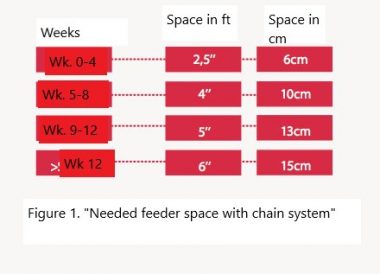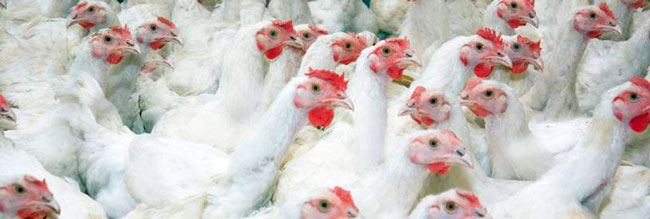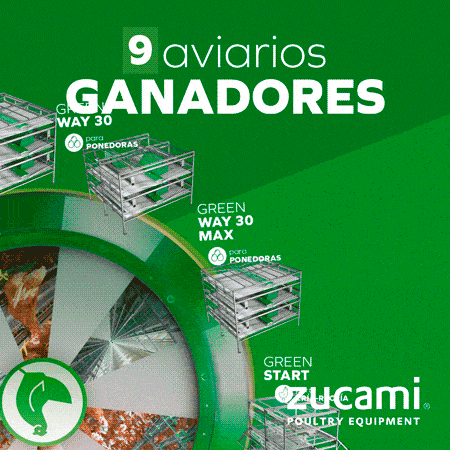Content available at: Español (Spanish)
We usually observe that due to these infrastructure deficiencies, many batches lose or do not maintain an acceptable breeding uniformity. Farm personnel must have a correct infrastructure in order to facilitate operations and achieve the objectives of enterprises.
Bird density in breeding and production must always be related to facility infrastructure. Densities up to 10 females/m2 and up to 4 males/m2 are acceptable for breeding. In production, up to 6.0-6.6 females/m2 can be very well managed. It all depends on infrastructure of feeders, drinkers, ventilation and other important factors.
This article describes several important aspects in breeding (birds which are from 0 to 25 weeks old) for achieving success in production.
Densities of up to 10 females/m2 and up to 4 males/m2 are acceptable in breeding
BASIC CRITERIA
- Sufficient feeder space
This means to progressively increase feeder space in breeding as birds grow older.
When using plate feeders, a criterion similar to those of figure 1 must be applied. However, there may be some preference in the case of plate feeders for daily feeding if the amount of feed allows it.
It is important to have sufficient amount of food in the system so that all plates have a reasonable amount and for consumption time to be >1h if possible.

- Quick feed distribution
1.-Chain Feeders
Chain speed: 120 feet/minute = 36 m/minute
Distribution in all the carcass in less than 3 minutes
2.-Plate feeders
In the case of plate feeders, once the tube has been fed with feed, availability of said feed is immediate in all barn areas.
3.-Use chicken gutters when using chain feeders for feeding
Chicken gutter used during the breeding period, unlike the production gutter (see figure 2), allows an easier distribution of feed over the entire length of the carcass keeping a good feed height over the chain.
On the contrary, using a production gutter in the breeding period -what it matters to us in this article – complicates feed distribution and negatively affects uniformity.

Figure 2. Different bird gutters. Regular use of the gutter from the left is for chickens but it is recommended for the raising period of heavy breeders
4.-Good bird distribution over the entire surface of the barn before initiating feed distribution
A good bird distribution will ensure that all birds eat almost at the same time. Feeding with low light intensity or feeding using a light signal helps a lot to achieve this objective.
5.-Sufficient amount of water in nipples
After 4 weeks of age, potential of water volume must be 50-60 cc/minute per nipple drinker.
Keep up to date with our newsletters
Receive the magazine for free in digital version
REGISTRATION
ACCESS
YOUR ACCOUNT
LOGIN
Lost your password?












